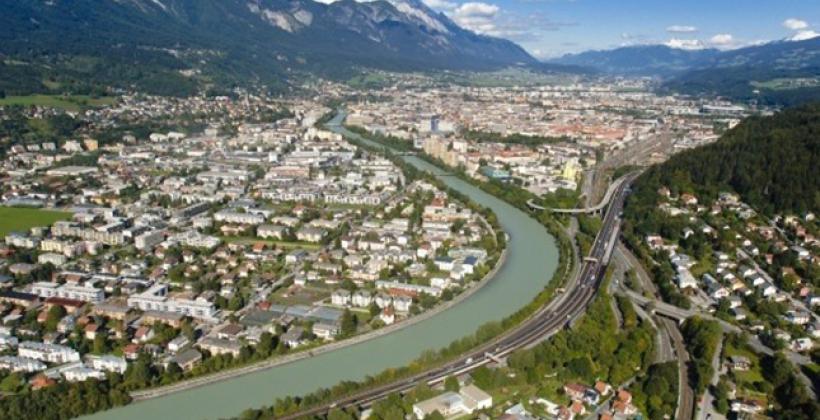
Location
Description
The city of Innsbruck in Austria (120 000 inhabitants) defined its 2025 Energy Plan back in 2009. In this context, and as part of the SINFONIA project, the city has selected its eastern district to demonstrate the large-scale implementation of energy-efficient measures, with the objective of achieving on average 40 % to 50 % primary energy savings in the demo sites, and to increase by at least 30 % the share of renewables in the district’s energy mix.
Demo Site Expected Impact
* Further information regarding the technical and financial performance will be available at a later stage.
As a result of the energy efficiency, the final energy consumption in Innsbruck will be reduced from 99 kWh/m²/yr (business as ususal) to 47 kWh/m²/yr, according to design data. This amounts to 535 MWh/yr of final energy savings for the two buildings reported by the project so far. The total primary energy savings go up to 607 MWh/yr while the CO2 reduction is 164 tonnes every year. These positive environmental values represent the expected results of the project and are likely to increase when more information is reported.
Technologies
Buildings and energy
* Information regarding the economic performance will be available at a later stage.
The implemented measures in Innsbruck are:
Energy efficiency in buildings
- Retrofitting the building envelope
- 66 000 m² of residential and public buildings from the period 1930 to 1980 are to be retrofitted to dramatically improve indoor quality and energy performance, and reduce the final energy demand by up to 80 %
- Building integrated renewable energy sources
- Integration of renewable energy sources on-site (photovoltaic, solar thermal)
- Heat pumps
Energy systems integration
- District heating and cooling
- The district heating network is to be extended and optimised to increase the use of renewable energy sources by 95 % and reduce the use of fossil fuel by 22 %. Solar energy and innovative biomass gasification are to be integrated into the network.
- Polygeneration
- Waste heat recovery
- Recovery of heat/cold from local industries, wastewater and geothermal heat from the Brenner Tunnel
ICT
- Smart electricity grid
- Smart grids and smart home applications are planned to combine demand and supply-side measures to reduce the overall electricity demand by 3 %. Buildings are to be transformed to smart urban model houses. Measures include the smart load control for refrigerators, water boilers and heat pumps, and the involvement of customers.
Building aspects
- Building Energy Services
- cooling and DHW
- Building Energy Services
- DHW (only)
- Building Energy Services
- heating (only)
- Building Energy Services
- heating and DHW
- Building Energy Services
- lighting and appliances
- Installed Renewable Energy Sources
- photovoltaic
- Technology used to supply the buildings
- condensing boiler
- Technology used to supply the buildings
- district heating (DH) network
- Technology used to supply the buildings
- electrical equipment
- Technology used to supply the buildings
- electrical heating system
- Technology used to supply the buildings
- stove
Energy Carriers
- Biogas
- Domestic gas - grid-bound
- Electricity
- Hard coal
- Heat/district heat
- Light oil
- Waste heat
- Wood Chips 30% moisture
- Wood pellets
Energy Systems Types
- Infrastructure & System Integration
- DHC extension
- Sustainable Generation
- Boiler
- Sustainable Generation
- Co-generation
- Sustainable Generation
- Waste heat
Thematic Field
- Energy System(s) Integration
- Information and Communication Technologies
- Refurbished Building(s)
